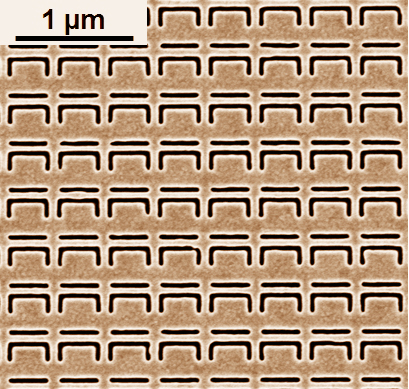Southampton's ORC creates artificial material with nonlinear optical properties 7 orders of magnitude greater than any in nature.

The results catapult nonlinear optical activity from barely detectable to major optical effect.Researchers at the University of Southampton's ORC have created an artificial material with seven orders of magnitude larger nonlinear optical activity than is found in any natural materials.
The work of the team over the past year,which was led by Mengxin Ren,now published in Nature Communications[3 833(2012)],catapults nonlinear optical activity from a barely detectable phenomenon to a major optical effect,with new potential for practical applications such as optical signal processing.
Eric Plum,Advanced Research Fellow,explained:"The nanoscale confinement of light in metamaterials offers extremely strong effects unfolding in nanoscale volumes of a nonlinear medium.Our work shows how nonlinear plasmonics can become a solution for real applications.We've combined our recent breakthroughs of hundred-fold nanostructuring-enhanced nonlinearity of metal films and exceptionally large linear optical activity in metamaterials to achieve this leap in technology."
Materials with a twisted structure,such as sugar solution and quartz,have the ability to rotate the plane of polarization of light,that is,optical activity.In the 1960s it was observed that such polarization rotation depends on the intensity of light,however,the effect of nonlinear optical activity in natural materials is typically very weak.
Metamaterials are artificial media with unusual functionalities resulting from structuring on a length-scale shorter than the wavelength of light.Seen as a key technology of the future,metamaterials research has grown rapidly in the past decade.
In an interview with optics.org Plum explained the background to Ren's group's latest results:"Nonlinear optical activity,that is intensity-dependent rotation of the polarization state of light,was first observed in the 1970s,after the invention of the laser.However,until now it was an extremely weak effect,too small for practical applications even in spectroscopy.





